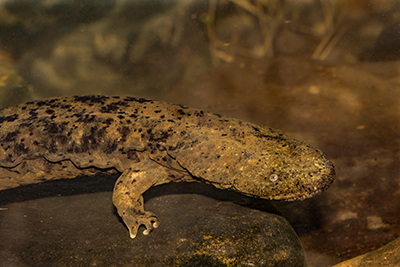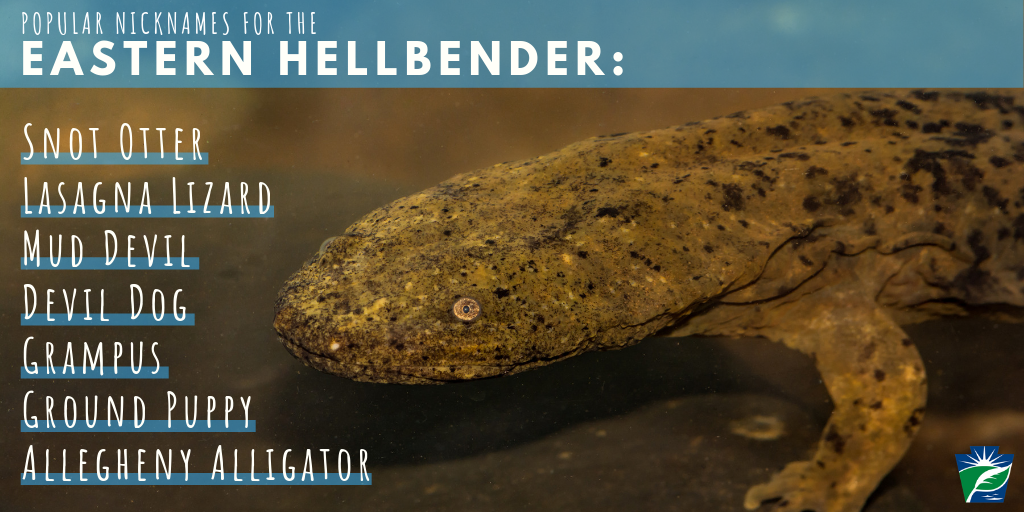 "Hellbender" may conjure an image of a villain in a blockbuster action movie, but in fact it's the name of the
largest salamander species in North America and the latest member of Pennsylvania royalty.
"Hellbender" may conjure an image of a villain in a blockbuster action movie, but in fact it's the name of the
largest salamander species in North America and the latest member of Pennsylvania royalty.
This spring, Governor Wolf signed a bill designating the Eastern Hellbender (Cryptobranchus alleganiensis) as the official state amphibian of Pennsylvania. This was the result of two years' effort by high school students in the Chesapeake Bay Foundation's
Student Leadership Council of Pennsylvania. They studied the hellbender and its habitat with Dr. Peter Petokas, who leads the
Hellbender Conservation Campaign at the Clean Water Institute at Lycoming College, and worked with state Senator Gene Yaw, who sponsored the bill.
Hellbenders are good indicators of water quality, because they can only live in clean, cool, fast-moving rivers and streams. Highly susceptible to pollutants, only about 60% of the Eastern Hellbender's historic population remains today. Sediment pollution in water can choke hellbenders and bury their eggs in riverbeds, threatening their populations. Projects that reduce sediment, such as planting trees along streambanks and repairing eroded banks, can improve hellbender habitat.
"Hellbender defenders" hope that the new state designation for this salamander will increase commitment and accelerate action to improve water quality.

The Pennsylvania Department of Environmental Protection (DEP), Department of Agriculture, and Department of Conservation and Natural Resources are working with community leaders in 43 counties in the Chesapeake Bay Watershed to do just that, with the draft
Pennsylvania Phase 3 Chesapeake Bay Watershed Implementation Plan (or draft Phase 3 WIP).
"Scores of Pennsylvanians are working together to restore and protect local streams because clean water is intrinsic to their quality of life," said DEP Secretary Patrick McDonnell. "Some people are personally motivated by their love of a specific species, such as the hellbender or our native brook trout (our state fish), or for many other reasons. But they also realize that restoring the health of our waterways creates a cascade of winning outcomes: Cleaner drinking water for our communities; better outdoor recreation opportunities like fishing and swimming; less erosion, flood damage and infrastructure repair costs; and all the economic benefits that follow."
The
U.S. Fish and Wildlife Service's hellbender research has identified sediment, agricultural and industrial pollution, warming waters, and channelization and impoundment of streams as key threats to its habitat.
Most of these challenges can be addressed by an array of conservation practices to reduce the levels of the phosphorus and nitrogen in our local streams and rivers outlined in the Phase 3 WIP.
For the Eastern hellbender and for all of us who rely on Pennsylvania's clean water to thrive, take a look at the draft Phase 3 WIP today, and make your own plan to take action for clean water for tomorrow.
Learn more about the Hellbender Salamander – the official State Amphibian of Pennsylvania.
Learn more about the efforts to improve water quality and hellbender habitat through the Phase 3 WIP.